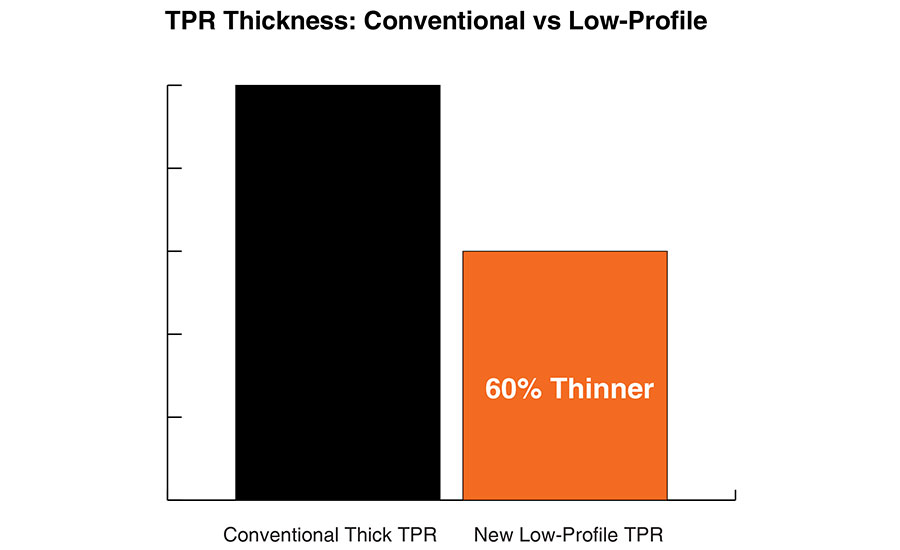We tend to think of impact work gloves as something you see on oil rigs or construction sites, where heavy duty impacts and blows are common. But almost any manufacturing process involves some type of rough work that can bump or bruise workers’ hands.
Traditional impact gloves have historically meant a glove covered with a solid, thick slab of polymer such as Thermo Plastic Rubber (TPR). These gloves tended to be a bulky, hot, compliance headache – but they were necessary for some very rough jobs (like on that oil rig) with high risks for heavy blows, crushes or pinches. The advent of new impact glove technologies and designs mean that both heavy and light duty jobs can use impact gloves to keep hands safer from injury while keeping the wearer more comfortable.
Comfort equals compliance
Innovations in impact designs break those thick slabs of TPR into a series of TPR flex-points. This allows the glove to move naturally with the worker’s hand for a comfortable fit with minimal hand fatigue.
New venting interspersed with the TPR along with mesh materials on the back allow heat and moisture to escape to keep workers’ hands both cooler and drier.

And more recently, new low-profile impact gloves have reached the market with a significantly thinner layer of ultra-lean TPR to protect against less severe blows, bumps, bruises, and pinches without impeding hand movement while they further reduce hand fatigue. (Illustration above)
Choose the right protection
The protection that impact gloves provide is a little like safety designs in the auto industry. In an accident, a car’s crumple zones smash in like an accordion to increase the amount of time an impact lasts. The same principle applies to impact gloves. The thickness of the polymer on the back of the glove protects your workers’ hands by increasing the distance between hand and impact and by “giving” or smashing slightly to increase the amount of time the impact lasts.
In the past, the effectiveness of a given glove’s protection was difficult to determine – making it hard to choose the right glove for your application. But the recently released ANSI/ISEA 138 Impact Glove Standard provides ratings to help you to understand which gloves offer the most protection. Lab testing assigns a number indicating the amount of force (known as “mean transmitted force”) that travels through the impact glove’s polymer to the workers’ hands.
- Level 3 provides the highest protection because it allows an average of 4 or less kN of force to travel through the glove.
- Level 2 provides mid-level protection because it allows an average of 6.5 or less kN of force to travel through the glove.
- Level 1 provides the lowest protection because it allows an average of 9 or less kilonewtons (kN) of force to travel through the glove.
These new ratings allow you to consider the force involved in your application and choose accordingly.
Beyond oil & construction
Along with new technology and clear ratings comes new uses for impact gloves. Applications that used to count a few scrapes and bruises as part of the job can now rely on lighter, more flexible impact gloves to better protect people without getting in the way of the work.
Die casting: For die casting, the combination of heat, sharp edges, and crush and pinch hazards involved in hammering edges from hardened molds makes impact gloves an important last line of defense to avoid injuries. But many safety managers concentrate only on the heat aspect of the job and neglect the other hazards. New impact gloves offer crush and pinch protection along with cut-, puncture and heat-resistance all in the same glove.
Machine maintenance: In the past, old-style impact gloves were often too thick and bulky to wear for machine repair, leaving workers at risk of pinch, crush, and impact injuries. The newest line of lean impact gloves with a thinner layer of low-profile TPR is ideal for these tasks as the gloves provide just the right amount of impact protection without compromising the workers’ ability to fit their hands into small spaces.
Working with heavy items: In any industry, if the job involves moving heavy equipment or material, your people are at risk of injuries. The severity of crush, pinch, and caught-between incidents can be lessened simply by switching to impact gloves. A variety of palm materials can also make injuries less likely as workers move away from plain leather drivers that can allow materials to slip through the hands.
Metal fabrication: New heat- and flame-resistant impact gloves allow you to offer complete protection to metal fabricators who need to work in the heat but who also need to roll, bend, form, join, hammer, and cut metal during a shift. Even welders are benefitting from these new innovations with the advent of welding gloves with FR impact protection.
Instrumentation & electrical work: The fine motor movement needed for I&E jobs usually eliminates thicker gloves as an option – but that can cost workers in scrapes or cuts when it comes time to pull wire or reach into a machine to make a repair. Thinner, low-profile impact gloves allow your employees to do all aspects of their job without removing their gloves.
Don’t miss out
New technologies, designs, and innovations are being created and tested even as you read this article. You might find that the next generation of impact gloves is just what you need to keep your workers safe.


